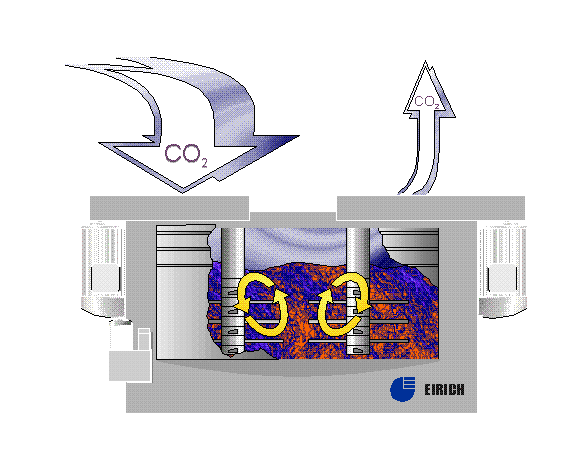Main menu
CODE CO2® - Details
CODE CO2 ®
Process using CO2 for "durable mineral carbonation"
Simple key formula for the CODE CO2 process:
MO + CO2 = MCO3 + heat
M is a divalent metal, like calcium, magnesium
Ca(OH)2 + CO2 = CaCo3 + H2O + heat
Mg(OH)2 + CO2 = MgCo3 + H2O + heat
IPCC -
Report 2005
Chapter 7: Mineral carbonation and industrial uses of carbon dioxide
The Chapter describes two rather different options for carbon dioxide (CO2) storage:
The fixation of CO2 in the form of inorganic carbonates, also kwon as "mineral carbonation" or "mineral sequestration"
The industrial utilization of CO2 as a technical fluid or as feedstock for carbon containing chemicals.
The process of CODE CO2® deals predominant with the fixation of CO2 in the form of inorganic carbonates / mineral carbonation.
Mineral carbonation is based on the reaction of CO 2 with metal oxide bearing materials to form insoluble carbonates, with calcium and magnesium being the most attractive metals. In nature such a reaction is called silicate weathering and takes place on a geological time scale. It involves naturally occurring silicates as the source of alkaline and alkaline-
Natural silicate weathering takes place on a geological time scale that means millions of years. The carbonation reaction on the basis of CODE CO2® process runs within seconds or minutes. This reaction takes place between (e.g) Calcium-
Suitable materials may also be alkaline industrial residues, such as slag from steel production or fly ash, especially from lignite fired steam/ power plants which contain high calcium and magnesium parts, blast furnace and converter dust and sludges, waste from municipal solid waste incinerators, ash from paper recycling, stainless steel slag and waste cement.
Large quantities of fly ash from lignite power stations are thoroughly wetted with (e.g.) water to form slurry which is transported by pipeline and / or conveyor belts at the edge of the open pit coal area where the slurry is discharged (landfill).
In a closed mixing chamber fly ash and water are thoroughly mixed to reach a slurry. When the slurry has reached the designed consistence, CO 2-
Lignite Power stations are more or less worldwide in operation. In case the German lignite power stations would use the process CODE CO 2 about 12 Million tons of CO 2 could be "buried" per year and this environmentally save.
Example of a Mixing unit:
